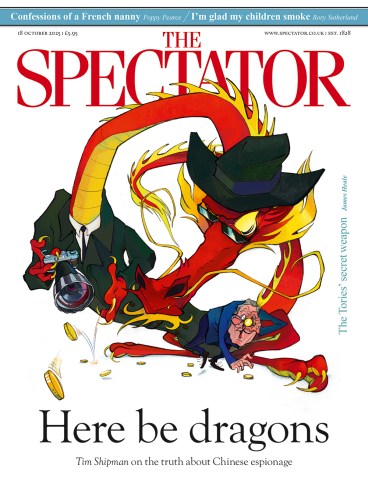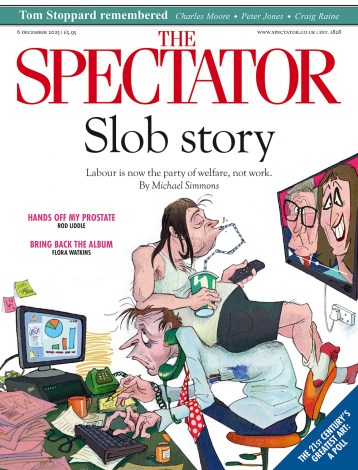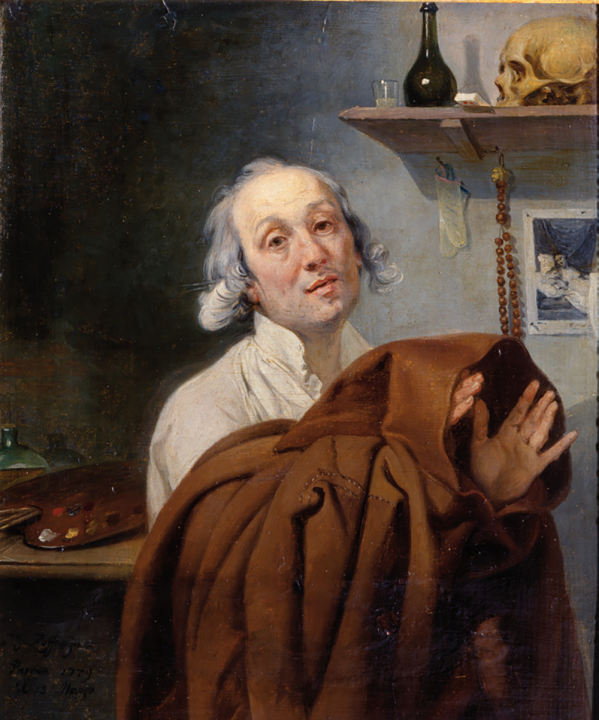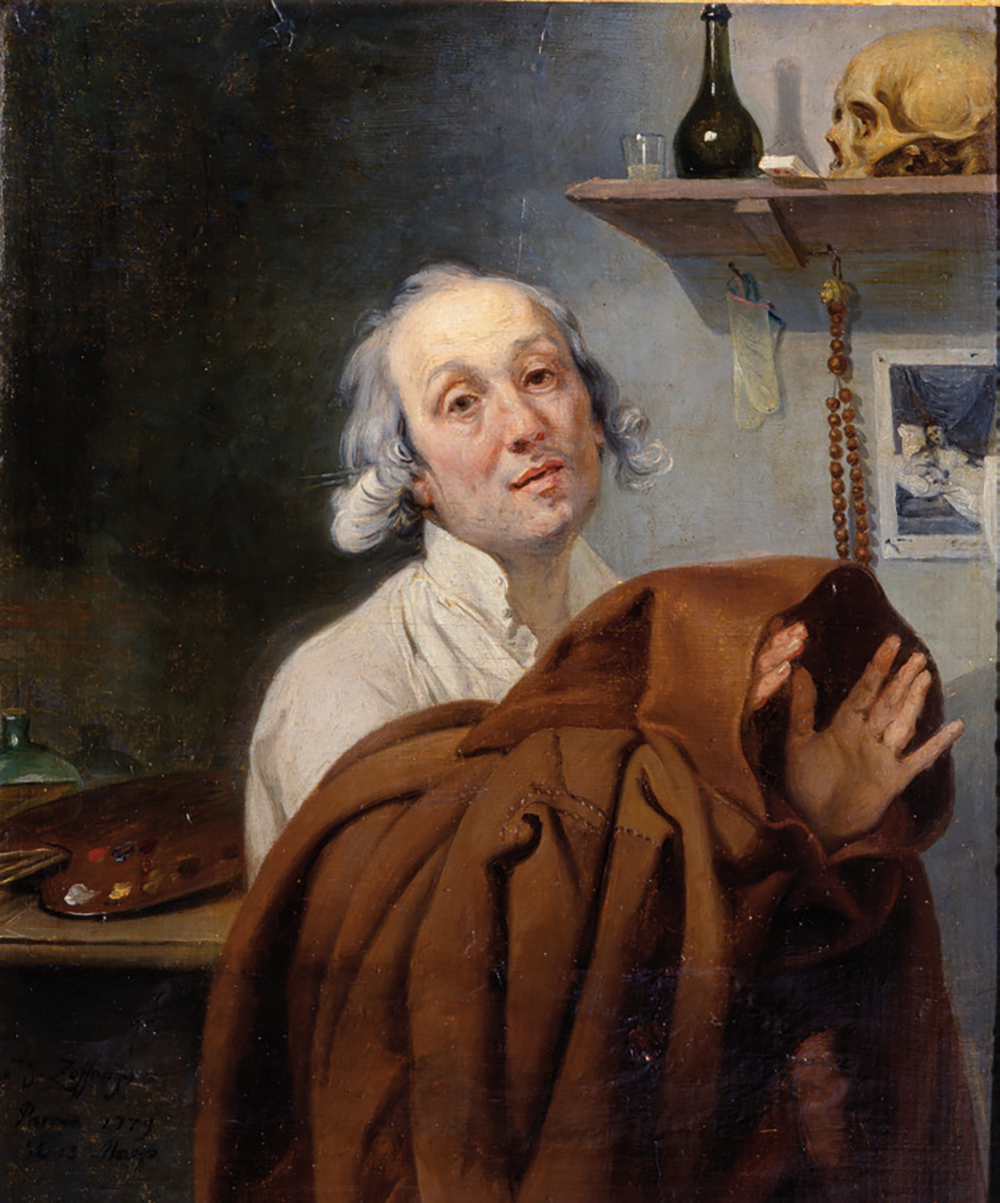
Waldemar Januszczak and Bendor Grosvenor’s art podcast has returned after nearly five years. It is, says Januszczak, ‘the podcast they could not stop – but they did have a jolly good try’. What happened? It isn’t clear; there are teases that it revealed too much, which is anyway a good ploy for attracting listeners.
‘Subversive’ is not the first word that springs to mind when tuning in to the two unlikely chums. Their regular feature, ‘Shocking News from the Artworld’, is more Apollo than Nigel Dempster. For example: Christie’s has closed the digital art department that dealt in NFTs, the crypto tokens going the way of the dodo. And Gabriele Finaldi, director of the National Gallery, has announced that 20th- and 21st-century art will be displayed there for the first time in history.
‘What a smooth talker he is,’ gushes Waldy of Finaldi, who has raised more than half a billion pounds since coming to the role a decade ago. ‘He can charm the pants off a donkey.’ Bendy, meanwhile, is sitting on his farm in the Scottish Borders looking at actual donkeys. His barley has failed to make the grade for malt whisky and, lo, by the second episode his donkeys have gone, one of them put down.
But the homeliness of the podcast is actually a virtue. We all know that the art world is pretty ghastly, but Waldy and Bendy chew it over by the fire and make it feel warm, even cosy. Their strategy is to shift the discussion away from the market and towards the art itself.
In the first episode of the new series, Bendy nominated the picture he would most like to hang on his wall. He chose a self-portrait by the German painter Johann Zoffany, in which the artist is shown dressing himself in a monk’s habit. It sounded very wholesome until Bendy described some of the objects in the background. There are playing cards, a skull, a print of Titian’s ‘Venus of Urbino’ with a paper covering up what Bendy described as, ‘Er, the most naked part of her’, and two condoms pinned to a wall. If you see condoms on a wall in a painting it apparently means that they’ve been cleaned and are ready to reuse – or at least it did in the 18th century.
I was already forming an interesting picture of Bendor Grosvenor when he described the portrait as a turning back on sex and sin. (Literally, for the other side of the canvas features a Rest on the Flight to Egypt.) Later in the episode he confessed that he has never found a painting physically arousing (the reusable condoms clearly didn’t do it for him), to which Waldy replied: ‘You’re a man of your times.’ In the next episode, Bendy made the case for seeing Caravaggio as a moralist, and selected Judith Leyster’s ‘The Last Drop’, a painting illustrating the evils of alcohol, as his contribution to a discussion of drinking paintings. Waldy, by contrast, chose Manet’s painting of the barmaid at the Folies-Bergère before praising Toulouse-Lautrec, artist of the Moulin Rouge.
Naudi is interested in ways in which art can be ‘seen’ without depending on one’s eyes
There is no impression of conscious typecasting here. The differing tastes of the hosts and their propensity to disagree with each other’s interpretations, however well thought through, make their podcast an unalloyed joy.
Until 1903, Judith Leyster’s painting, mentioned above, was erroneously attributed to Frans Hals. The master of the Dutch Golden Age was the ostensible subject of an unusual and fascinating documentary on Radio 4 last week. The programme took its title from John Berger’s Ways of Seeing, the full significance of which was only realised at the end. The ‘Not’ referred to the fact that the presenter, Joseph Rizzo Naudi, is blind.
Naudi is interested in ways in which art can be ‘seen’ without depending on one’s eyes. Audio description is provided by many galleries, but until now the emphasis has been upon describing the artworks as objectively as possible, without imposing an interpretation on it. Recently, the tide has begun to change, and his documentary was in one part an argument for offering more than a simple outline of a picture’s contents. Some wonderfully atmospheric snippets of description from members of the public were interlaced with poetry and interviews.
‘How easily can you imagine a naked body painted by Hals?’ asked the beautifully voiced Naudi. ‘One has to discard all those black clothes that frame the experiencing faces and nervous hands and then picture a whole body painted with the same degree of intense, laconic observation.’
His documentary was consciously, brilliantly dizzying; the resulting twist encouraged us to question the legitimacy of prizing a physical artwork over a literary description of an artwork. There’s inspiration, I thought, for Waldy and Bendy right there.








Comments